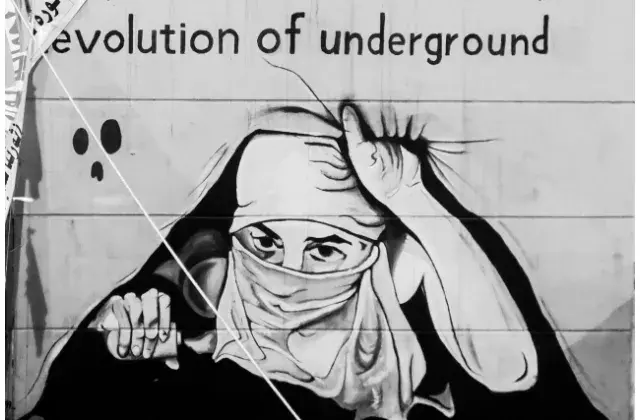حملة مكافحة التمرد ضد الأكراد في الفترة ١٩٨٧-١٩٨٩، وحملة الأنفال (١٩٨٧ - ١٩٨٩)

عندما كانت الحرب العراقية الإيرانية تقترب من نهايتها، ومع تزايد القلق بشأن تآكل سلطته، رأى صدام في كردستان فرصة لإظهار قوته وقسوته. لقد واجه بالفعل وضعًا أمنيًا متدهورًا في الشمال، بسبب التحالف بين الحزب الديمقراطي الكردستاني والاتحاد الوطني الكردستاني في عام 1985، مما أدى إلى عمليات عسكرية أكثر استدامة وفعالية ضد الحكومة العراقية. في مارس 1987، وفقًا لمنظمة هيومن رايتس ووتش، عين صدام حسين علي حسن المجيد في عام 1987 بتفويض لقمع المقاومة الكردية، مما أدى إلى تنفيذ حملة الأنفال، التي تضمنت تدميرًا منهجيًا وهجمات كيميائية. بدأت الحملات بشكل متقطع بإعدام أعضاء حرب العصابات الأكراد، وهدم القرى، وتدمير الزراعة، واستخدام الأسلحة الكيميائية لنشر الرعب. لم تنجح التدابير في عكس الوضع العسكري لأنها كانت موجهة إلى المناطق التي تسيطر عليها الحكومة. لذلك، علي حسن المجيد، المعروف باسم "علي الكيماوي" لاستخدامه الأسلحة الكيميائية ضد السكان الأكراد. تضمنت حملة الأنفال خطة شاملة على مدى ثماني مراحل من العمليات العسكرية والهجمات الكيميائية التي تم التخطيط لها وتنظيمها وتنفيذها بعناية من قبل الكيانات العسكرية والأمنية والجاه (كتيبة الدفاع الوطني الكردية الموالية للحكومة). استهدفت سبع من الهجمات مناطق خاضعة لسيطرة الاتحاد الوطني الكردستاني. استهدفت العملية الأخيرة المناطق الخاضعة لسيطرة الحزب الديمقراطي الكردستاني في الشمال الغربي.
اشتملت حملة الأنفال، التي استمرت من فبراير إلى سبتمبر 1988، على هجمات برية وقصف جوي ورعاية كيميائية، إلى جانب عمليات إعدام جماعية واختفاء جماعي ونزوح جماعي قسري وهدم منهجي لنحو 2000 قرية بأكملها وما لا يقل عن اثنتي عشرة مدينة ومركزًا إداريًا وبنية تحتية وأراضٍ زراعية ونهب واعتقالات تعسفية وسجن في ظروف سيئة للغاية، بينما تم تقسيم الرجال والنساء وحتى العائلات بأكملها. إن قائمة الوحشية لا تنتهي. كان الاستخدام الواسع النطاق للأسلحة الكيميائية، بما في ذلك غاز الخردل وغاز الأعصاب جي بي، أو السارين، وخاصة ضد الجماعات الكردية المدنية بما في ذلك النساء والأطفال، سمة أخرى من سمات حكم علي حسن المجيد الإرهابي. كانت إيران عاجزة إلى حد كبير عن التدخل، مدركة لاستعداد علي أنفال لتوسيع ساحة المعركة خارج المناطق الكردية. على سبيل المثال، لم يكن الهجوم الكيميائي على حلبجة جزءًا من برنامج الأنفال الأولي، بل كان رد فعل مفاجئ على الاستيلاء على حلبجة في المرحلة الأخيرة من الحرب الإيرانية العراقية من قبل مقاتلي البشمركة الأكراد، بدعم من إيران. في 16 مارس 1988، بعد يومين من الاستيلاء على حلبجة، أجرى علي قصفًا كيميائيًا تحول إلى هجوم بري، مما أسفر عن مقتل ما لا يقل عن 5000 مدني وإصابة عدة آلاف على الأقل بجروح. كانت مذبحة حلبجة أكبر هجوم كيميائي منذ الحرب العالمية الأولى موجه ضد السكان المدنيين. في نهاية الحملة، تم تدمير حوالي 80٪ من جميع القرى في ثلاث محافظات، وتم إعلان الكثير من الأراضي الزراعية "منطقة محظورة" وتختلف تقديرات الوفيات الإجمالية، وتتراوح من 50.000 إلى 100.000. وقد وثقت هيومن رايتس ووتش ومنظمات أخرى مقابر جماعية وعمليات قتل ممنهجة لتوضيح هذه الأرقام. وبسبب هويتهم العرقية والجماعية، وليس وضعهم الفردي، لم يصبح الأكراد وحدهم أهدافًا. وفي حين كانت الأهداف الأساسية هي السكان الأكراد، فقد تضمنت الحملة أيضًا فظائع ضد أقليات أخرى مثل الآشوريين. وامتد الدمار إلى ما هو أبعد من المناطق ذات الأغلبية الكردية وشمل الجهود الرامية إلى تعزيز السيطرة على المناطق الغنية بالموارد مثل كركوك.
كانت حملة الأنفال والحركات المضادة للتمرد التي سبقتها وبعدها تهدف إلى تدمير الجماعة الكردية في العراق بسبب هويتها العرقية والجماعية، وليس وضعها الفردي، وهي ترقى إلى مستوى أعمال الإبادة الجماعية. وفي حين نفذ حزب البعث سياسات التعريب بدءًا من سبعينيات القرن العشرين، كانت حملة الأنفال نفسها بمثابة جهد متميز لمكافحة التمرد والإبادة الجماعية يستهدف السكان الأكراد في المناطق الريفية. وقد تفاوض نائب الرئيس صدام مع مصطفى بارزاني من الحزب الديمقراطي الكردستاني على اتفاقية الحكم الذاتي العراقي الكردي التي تم توقيعها في الحادي عشر من مارس/آذار 1970. وخلال مرسوم الحكم الذاتي شرع حزب البعث في تعريب المناطق المنتجة للنفط وخاصة كركوك وخانقين، حيث طرد المزارعين الأكراد واستبدلهم بأبناء القبائل العربية الفقيرة من الجنوب. وقد أدت النزاعات الإقليمية وغيرها من المطالب غير المحققة إلى اندلاع الحرب العراقية الكردية الثانية (1974-1975)، حيث تلقت الجماعات الكردية، بما في ذلك تلك التي قادها مصطفى بارزاني، الدعم العسكري من الشاه الإيراني الموالي لأميركا محمد رضا بهلوي. وأدت معاهدة الجزائر لعام 1975 بين إيران والعراق، والتي كانت تهدف إلى حل النزاعات الحدودية، إلى سحب إيران دعمها للقوات الكردية، الأمر الذي ساهم في استسلام بارزاني. وأجلت الحكومة بالقوة ربع مليون رجل وامرأة وطفل كردي على الأقل من المناطق المتاخمة لإيران وتركيا. ومُنع العديد من هؤلاء الأكراد النازحين من العودة إلى ديارهم وواجهوا عقوبات شديدة إذا حاولوا القيام بذلك.
هذا المحتوى مرخص بموجب رخصة المشاع الإبداعي CC BY-NC 4.0.






